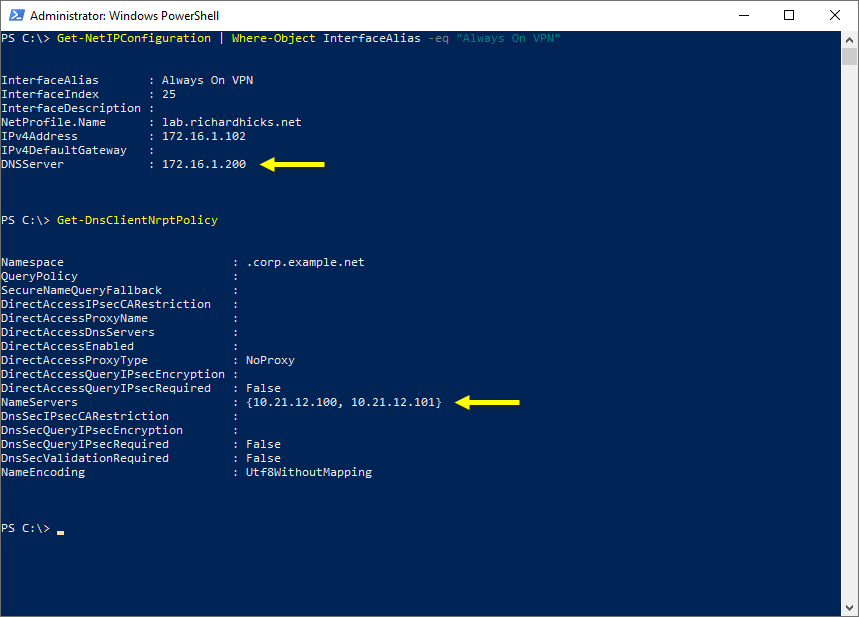
All your servers and workstations (that are domain-joined and running Windows) can automatically register themselves into DNS. When you run AD integrated DNS, you have the option to permit dynamic updates and require that they be secure … meaning authenticated by domain members. This may cause some comments, but bear with me for a moment. It’s the best way to go for your internal DNS. That provides high availability, fault tolerance, and easy setup when running DNS on domain controllers. Not storing AD zones in ADĪD integrated zones are stored and replicated with Active Directory, and can be configured to replicate to all DNS servers in the domain or the forest. With DNS close by, all other apps will perform better because name resolution happens locally. If you don’t have domain controllers in every site, you should at least deploy a caching-only DNS server on some system in the location, such as the File and Print server. To do that, you need to have a DNS server local to your clients. I strive for under 25ms, but under 50ms is good enough.
Enable dns updates for mac client windows server 2016 dhcp keygen#

Keep DNS response times fast for your clients. When they use other DCs for DNS, you will find fewer overall issues with AD replication. When domain controllers use themselves for DNS, especially when DNS is AD integrated, they can become islands and start to fail replication. Once you build a third, add that one into the mix so no DC must rely upon itself for DNS (using its local ip.addr or 127.0.0.1.). As soon as your second domain controller is up and running, reconfigure the first to use the second for DNS, and the second to use the first. However, don’t leave it that way, or do that for any other server. When you set up your first domain controller in a forest, you really have no choice but to point the server to itself for DNS. Let’s review nine mistakes that can cause problems with any network environment when DNS server is not configured correctly. That’s a good start, but there are several misconfigurations in DNS that come up again and again.

If your DNS server ever gets a query for which it has no record, it can forward that request on to another DNS server to see if it has the answer.If you are running DNS services on a Windows server, then you’ve probably got Active Directory running, your DNS servers are also your domain controllers, and you have your clients configured to use their nearest DC for DNS. Up next is the option to configure forwarders. Do not allow unsecured dynamic updates unless you really know what you are doing and have a very good reason for doing so.

Select do not allow dynamic updates if your DNS is not integrated with Active Directory and you don't want to allow dynamic updates. Select the first option to allow only secure dynamic updates if you are integrating your DNS with Active Directory. Although there are three choices here, only two should actually be used in production. Next you select how this server will respond to Dynamic Updates. Unless you have a corporate policy stating otherwise, stick with the convention to make things easier on yourself down the line. dns extension to the name of the zone you chose in the previous window. Now, you need to choose the file name where the DNS records will be stored. For example, us. would be the zone name for just the American part of my vast corporate empire :) Click next when you have entered the name. If however, this server will be authoritative only for a subset, and other DNS servers will be responsible for other zones, then the name will need to reflect that. If this is your first DNS server, then this needs to be the root zone name for your entire organization. Now, you choose whether this server will maintain the zone, or if this server will have a read-only copy of the DNS records from another server. (Backup zones typically don't hurt anything, and they are nice to have when the need arises.)Īfter you've made your section, click Next. If not, use forward and backward for most situations.

If you already have DNS setup on your network, you'll probably want to continue using the same configuration you already have. Root hints only will not create a database of name records for lookups, but rather will just have the IP addresses of other DNS servers where records can be found. ("Ah, hah! It's you Third Floor Vending Room Printer #1. For example, if a user is set up to print to a printer with an IP address of 10.20.12.114, but you need to know what name that printer goes by so you can find it, a reverse lookup can help. You can either: configure a forward lookup zone only, create forward and reverse lookup zone, or configure root hints only.Ī forward lookup zone allows you to do the standard DNS function of taking a name and resolving it into an IP address.Ī reverse lookup zone allows you to do the opposite, taking an IP address and finding its name.


 0 kommentar(er)
0 kommentar(er)
